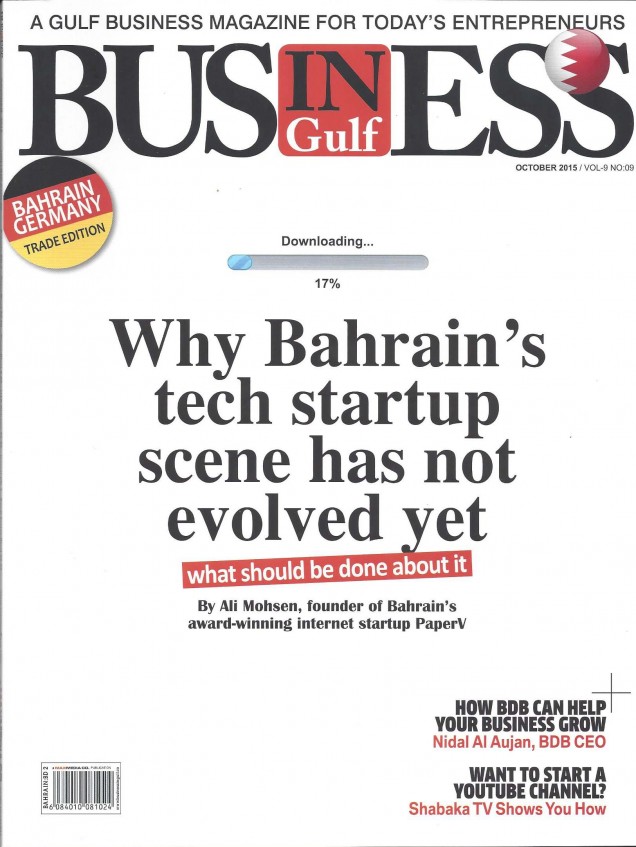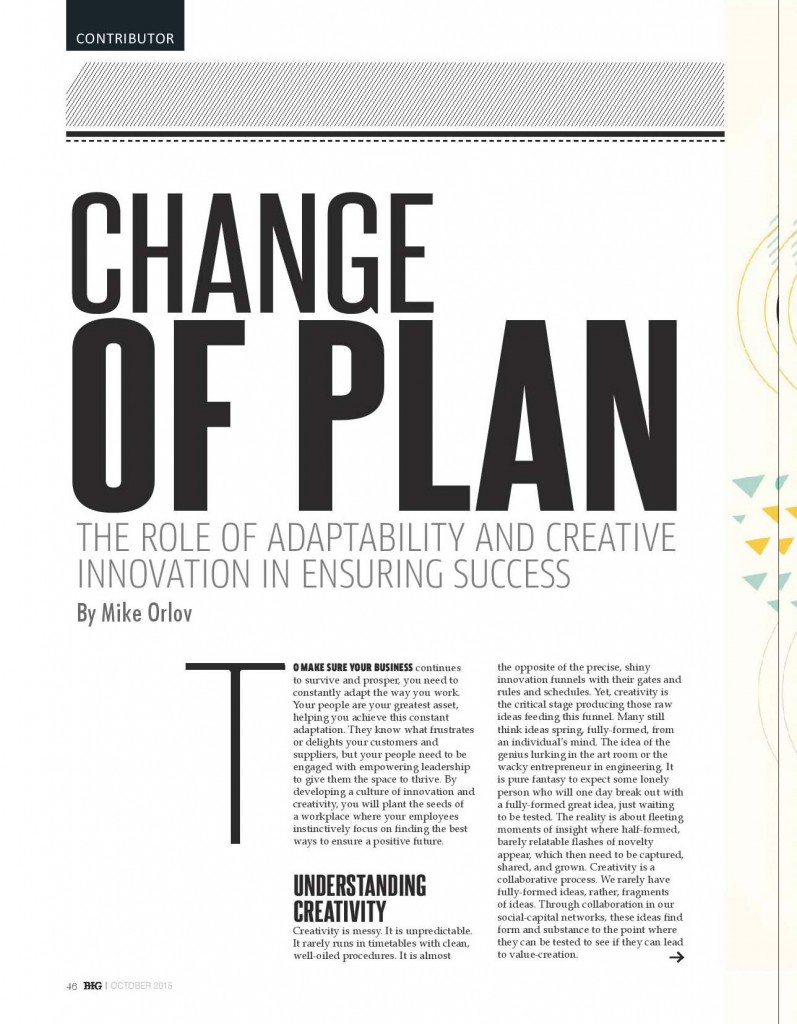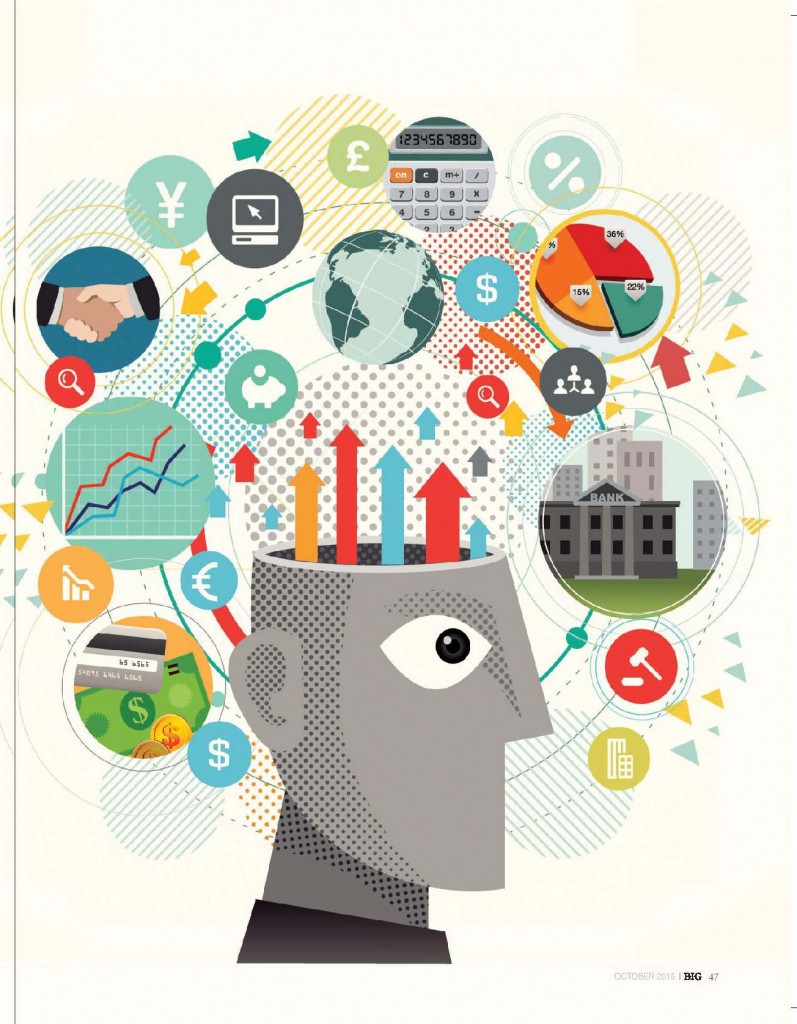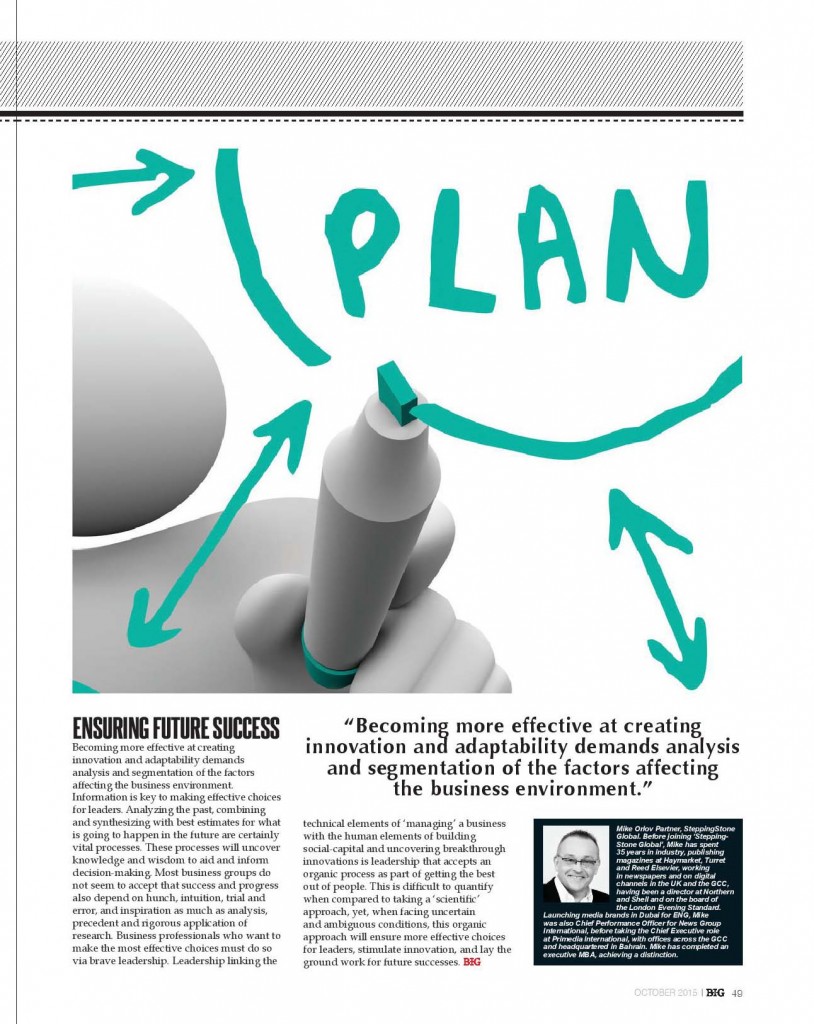Adaptability and Creative Innovation
To make sure your business continues to survive and prosper, you need to constantly adapt the way you work. Your people are your greatest asset helping you achieve this constant adaptation.
They know what frustrates or delights your customers and suppliers, but your people need to be engaged with empowering leadership to give them the space to thrive. By developing a culture of innovation and creativity, you will plant the seeds of a workplace where your employees instinctively focus on finding the best ways to ensure a positive future; your people really do know much of value.
But this creativity is messy. It is unpredictable. It rarely runs to timetables with clean, well-oiled procedures. It is almost the opposite of the precise, shiny innovation funnels with their gates and rules and schedules. Yet creativity is the critical stage producing those raw ideas feeding this funnel.
Many still think ideas spring, fully formed, from an individual’s mind; the idea of the genius lurking in the art room or the wacky entrepreneur in engineering. It is pure fantasy to expect some lonely person who will one day break out with a fully formed great idea just waiting to be tested.
The reality is about fleeting moments of insight where half formed, barely relatable flashes of novelty appear which then need to be captured, shared and grown.
Creativity is a collaborative process. We rarely have fully formed ideas; rather, fragments of ideas. Through collaboration in our social-capital networks, these ideas find form and substance to the point where they can be tested to see if they can lead to value-creation.
Business professionals need to ensure organisations find this value-creation and can then react quickly to uncertainty, ambiguity and changes in market conditions. Organisations’ capabilities to respond speedily in the face of increasingly uncertain and ambiguous conditions are honed and refined through the processes followed by individuals, the structures they create, the strategies they undertake and the freedom which they allow to stimulate creativity and innovation.
In uncertain conditions it is those businesses that are led, rather than just managed, which will adapt quickly. Earning buy-in to strategy and activity from all stakeholders in the business is a vital process. If stakeholders are not involved in strategy formulation, then reaction to uncertainty will almost certainly be slow. Strategy needs to be communicated to all stakeholders.
For those leading organisations strategy-definition is vital; defining the activities and outcomes necessary to deliver for stakeholders. Strategy needs to satisfy key criteria. Ensure it can be easily: communicated; measured; related to both short and long term; and adapted, changed, shifted and carry out a U turn when necessary
Developing this approach focuses on the longer-run effects of choices. By adopting a ‘keeping profits at the expense of margins’ strategy you may protect short term results, but this may not be your most effective strategy in the longer term. Evaluation of activity and results against strategic planning is vital; only through identifying how choices are working can we understand how effective these choices have been.
Given complexities caused by globalization, de-regulation and digitization concentrated through the prisms of consolidation and industry collisions, there is a need for organizations to become capable of rapid strategic shifts, embracing messy creativity as part of the innovation and strategy creation processes.
It is the time and regularity with which creative explosions and evaluations occur which makes the difference to a company in uncertain conditions. There are many businesses relying on annual strategy reviews rather than encouraging and embracing creativity, innovation and regular alterations and changes.
Often dilemmas will be faced without a clear-cut ‘best choice’. Business professionals are then often faced with making a ‘least-worse’ choice in terms of aligning investments, particularly in people, to achieve agreed goals and combat threats.
Becoming more effective at creating innovation and adaptability certainly demands analysis and segmentation of the factors affecting the business environment. Information is key to making effective choices for leaders.
Analyzing the past, combining and synthesizing with best estimates for what is going to happen in the future are certainly vital processes. These processes will uncover knowledge and wisdom to aid and inform decision-making.
Most business groups do not seem to accept that success and progress also depends on hunch, intuition, trial and error and inspiration as much as analysis, precedent and rigorous application of research. Business professionals who want to make the most effective choices must do so via brave leadership.
Leadership linking the technical elements of ‘managing’ a business with the human elements of building social-capital and uncovering breakthrough innovations is leadership which accepts an organic process as part of getting the best out of people.
This is difficult to quantify when compared to taking a ‘scientific’ approach. Yet when facing uncertain and ambiguous conditions this organic approach will ensure more effective choices for leaders, stimulate innovation and lay the ground work for future successes.





